*FYI - this post may contain affiliate links, which means we earn a commission at no extra cost to you if you purchase from them. Also, as an Amazon Associate I earn from qualifying purchases. Check out our Privacy Policy and Disclosure. for more info.
Ah, Italy. I’ll never understand how a country so beautiful can be so stressful.
As one of the most romanticized countries in the world, many first time visitors are shocked to discover that Bella Italia isn’t just a non stop parade of gelato, spaghetti and Vespa rides with men named Paolo.
Pickpockets? Bone-chillingly ruthless drivers? Random fees and charges? Unspoken food rules that feel more important than actual laws?
Yes, Italy is amazing… but it also has a lot of random traps and culture shocks that stump first time visitors.
… But not you! Because you’re here. And you’re about to learn all my top Italy travel tips, assembled after a decade of frequent trips to (what is honestly) one of my favourite countries in the world.
So, read on for a list of important must knows before you visit Italy. Armed with these, you can properly enjoy your Italian dream trip just like in the movies.
1. Expand your Italy itinerary beyond the best known places
Let’s get this out of the way: Italy is a popular place, and thanks to the powers of social media, droolworthy destinations like Rome, Florence, Venice, Milan, Cinque Terre and the Amalfi Coast are now firmly at the top of everybody (and their mom)’s bucket lists.
But with this popularity comes crowds, and quite ironically, many tourists find that ‘too many tourists’ can ruin their experience.
Luckily there are ways to enjoy Italy away from the crowds – the main one being to visit more offbeat places.
That’s not to say you should avoid Rome or Venice altogether, but here’s what I would suggest: pick a popular place as your base, then diversify your itinerary by adding on side trips to quieter gems nearby.
For instance…
- Going to Venice? Add on cool nearby cities like Padua and Ferrara or venture farther North to visit Trentino or South Tyrol.
- Going to Rome? Visit Tivoli! And actually Fiumicino (by the airport) is quite nice.
- Going to Florence? Add a visit to Bologna, or other tasty towns around Emilia Romagna.
- Going to Cinque Terre? Visit more towns along the Ligurian coast, or add on a day or two in Genoa – the region’s capital.
Of course, you can also simply focus your entire trip on a lesser explored part of Italy. With twenty regions and hundreds of islands off the mainland to choose from, you’re spoiled for choice.
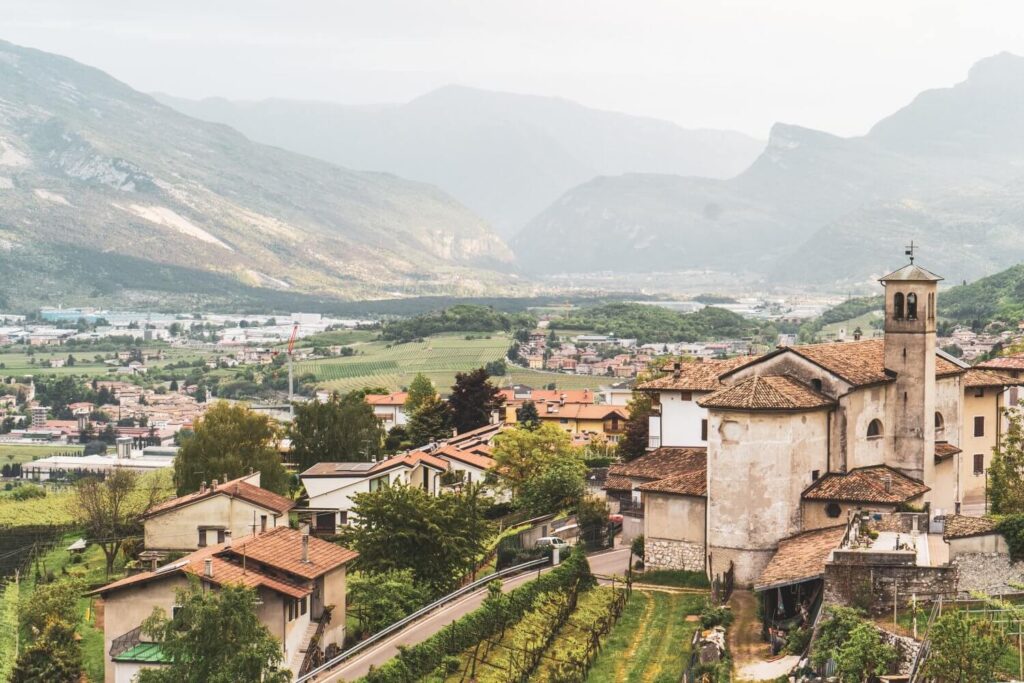
2. Avoid peak season like the plague
I know summer in Italy sounds like a dream.
… But it’s not. It’s sticky. It’s crowded. And it’s when prices are at their most eye-gouging.
So, if you have the luxury of flexibility, I’d opt for a visit in the shoulder seasons (Spring or Fall) or, in the case of city breaks, even a visit in the winter.
I’ve done city trips to Rome, Venice and Verona in the dead of winter and while the weather was hit and miss, the lack of crowds and tolerable accommodation prices more than made up for it.
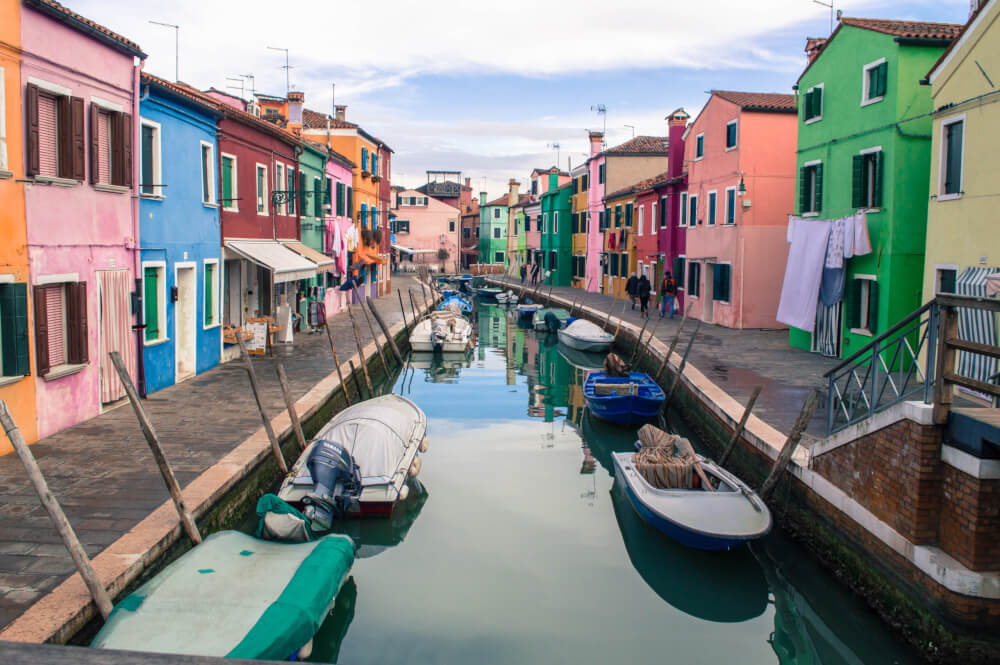
3. For city to city travel, choose public transport if possible
Driving in Italy can be a stressful endeavour and only really necessary if you plan to visit smaller villages or more remote areas.
Otherwise, city travel with trains or buses couldn’t be easier. If you’re unsure of which options make the most sense for your trip, then I’d recommend hopping on Omio to compare buses, trains and flights at a glance.
I cover more in my guide on the cheapest ways to travel Europe, so be sure to check that out for more info.
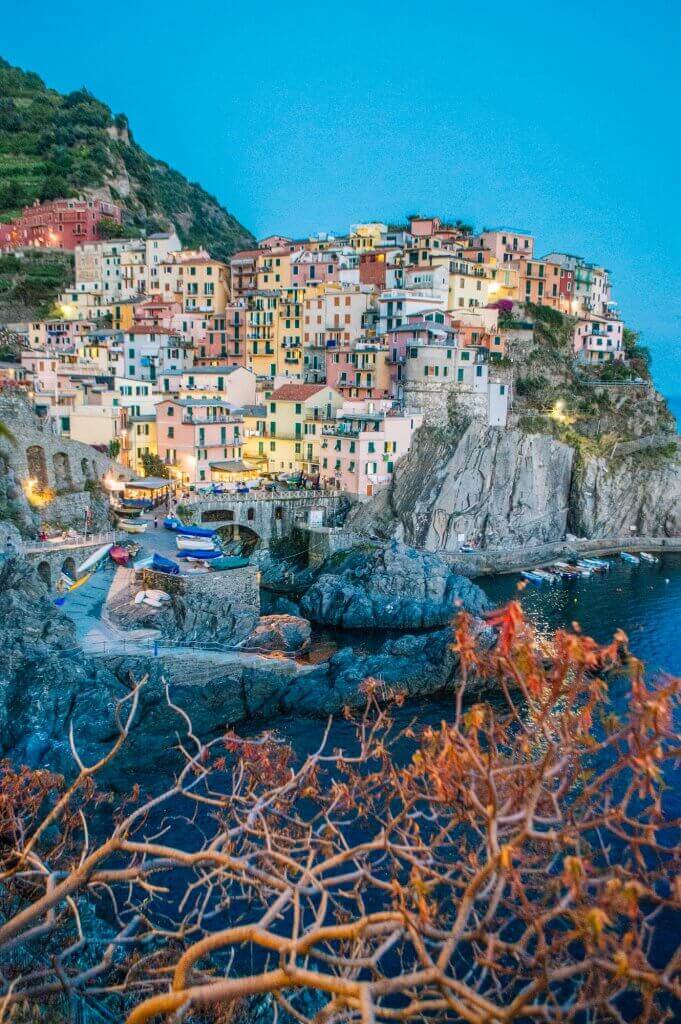
4. Beware the common mistakes when renting a car
Of course, if you’re up for the thrills of real-life Italian Mario Kart, then there are a few extra things you should know. Here are some tips for renting a car in Italy.
When renting a car in Italy, try to…
- Pick a small one because you never know when you might end up on an impossibly narrow Italian road
- Get a vignette if driving into other countries. This is a paid sticker that you must put on your car if you want to use the country’s motorways, otherwise you get fined. You don’t need them in Italy, but you do for many of Italy’s neighbours like Austria, Switzerland, and Slovenia.
- Avoid ZTLs, or Zona a Traffico Limitato. These are zones in busy cities where you can get fined for driving in them during certain hours.
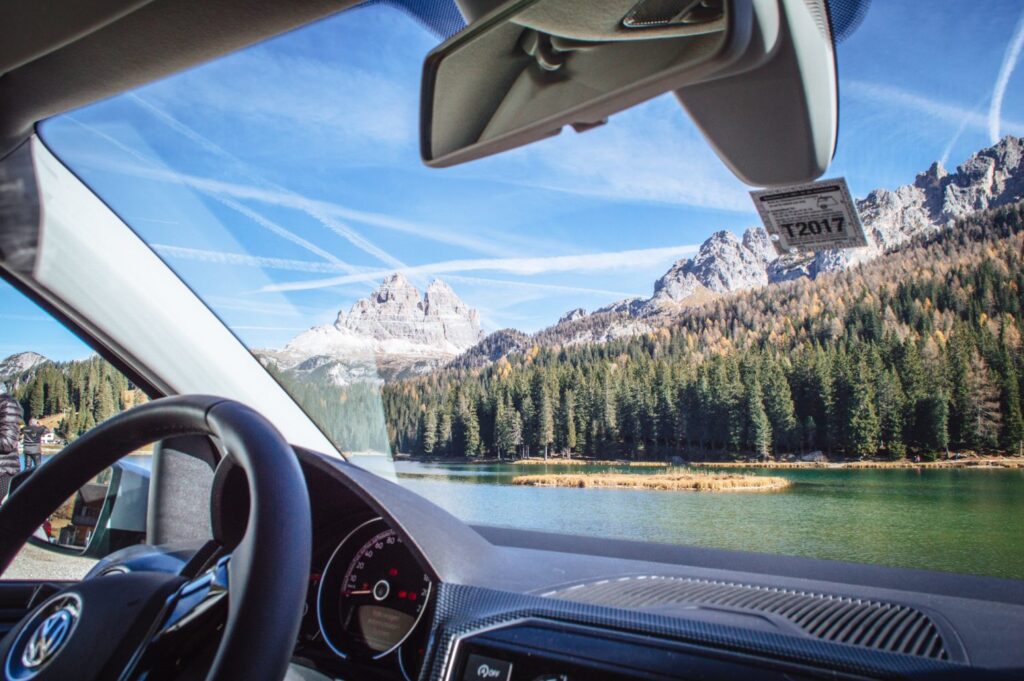
5. Buy bus tickets in advance
One of the stranger quirks of Italy travel is that bus tickets oftentimes aren’t available for purchase on the bus.
In these cases, you need to make sure you have tickets for the bus before boarding. Luckily, you can usually buy these from a Tabacchi (Tobacco Shop / Convenience Store) or newspaper stand.
NOTE: With these pre-purchased tickets, make sure you validate them through a machine once you board, or you may be fined if ticket controllers come on board.

6. Always buy train tickets in advance too
If you look up the word “stressed” in the dictionary, it’s likely you’ll encounter a photograph of a sweaty, lost tourist in an Italian train station.
I don’t know what it is. Maybe it’s the heat. Or the omni-present pickpockets. Maybe it’s the parade of quick-moving humans who all seem to know what they’re doing besides you… or the fact that you’re dragging all your bags along with you. But Italian train stations (for those new to them) can be some of the most chaotic and stressful places on Planet Earth.
SO, my best Italy travel tip for avoiding the stress and chaos of train stations is to simply book your tickets ahead of time, so you’re not awkwardly staring at a machine upon arrival, trying not to cry.
You’ll usually save money this way too!
You can check out my post about how to take trains in Europe for more info on the train taking process.
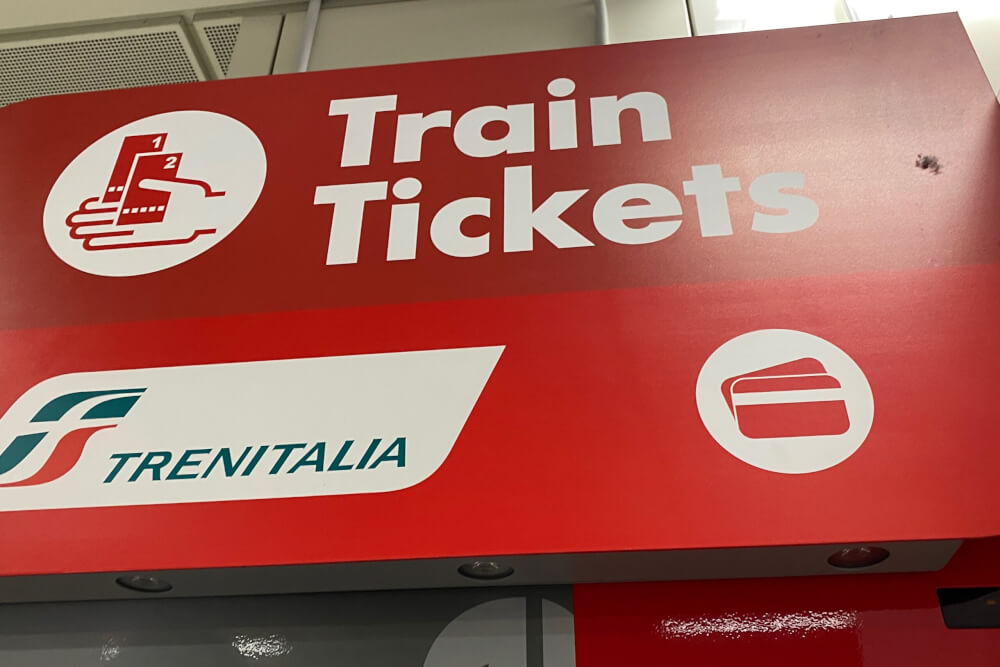
7. Always validate physical tickets when needed
In Italy, having a train ticket isn’t enough to avoid a fine. It must be properly validated too.
This is one of the top mistakes tourists make in Italy, so don’t let that be you! If you have a physical train ticket, be sure to validate it as needed at a machine like this:
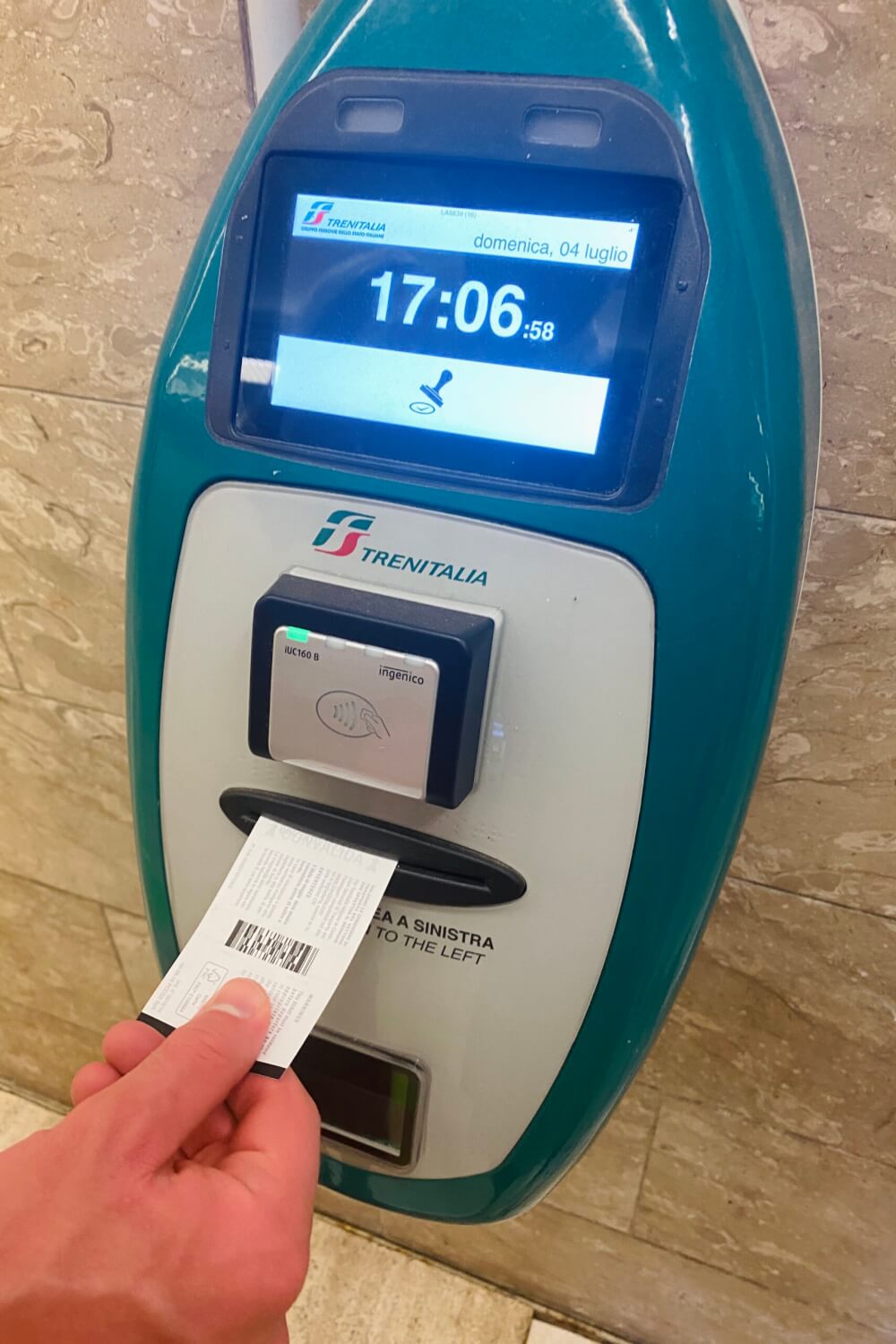
8. Remember that there’s tremendous cultural diversity within Italy
For many, Italy is a country we feel like we know a lot about thanks to its total domination in popular media and culture.
But the truth is, Italy can look VERY different depending on where you go, and all things from culinary specialties to even language can differ based on region.
For instance, there are parts of Northern Italy where German is so commonly spoken that many major destinations have both Italian and German names. (Lago di Braies and Pragser Wildsee are the same place! Who knew?)
So, anyways, before your trip, try to cleanse your brain of any random Italian stereotypes and be sure to research cultural norms appropriate for your destination.

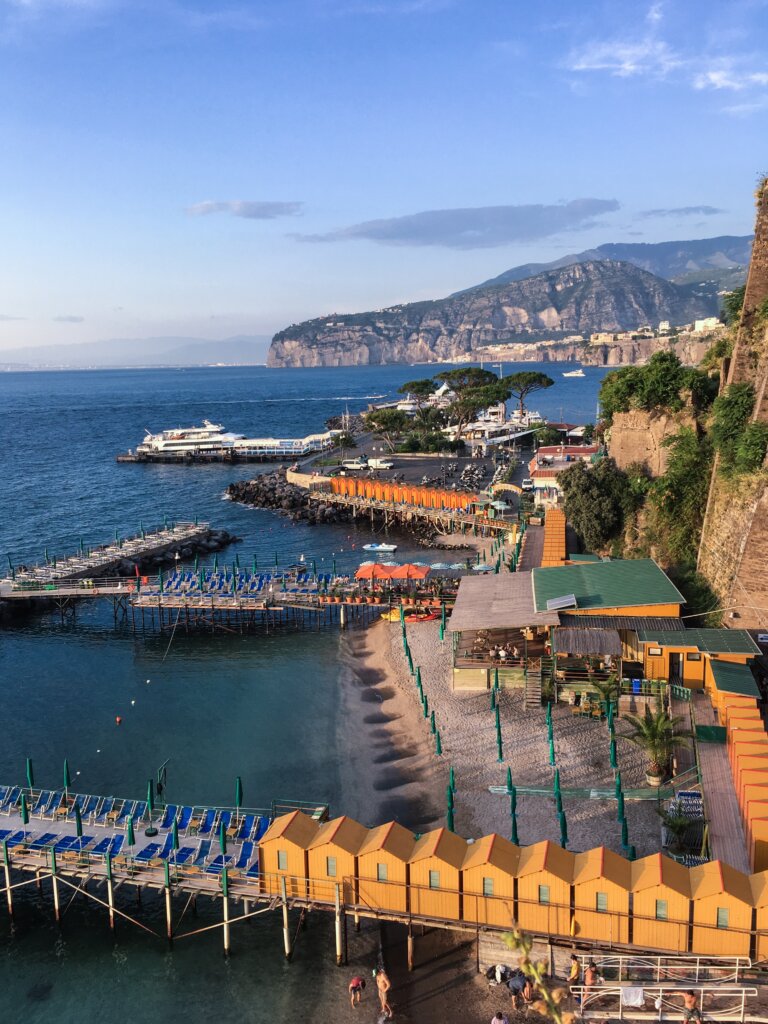
9. Learn how to say hello and thank you
Apart from my usual reason that it’s just good manners to learn a bit of the local language, in Italy there’s the bonus perk that Italian is just so fun to speak.
So take advantage and speak as much of it as you can while you’re there. Knowing the basics can go a long way.
Here are the basics to learn by heart before your visit:
- Hello (in the morning/afternoon): Buongiorno (Bwon-JOOR-no)
- Hello (in the evening): Buonasera (Bwon-ah-SAY-ruh)
- Thank you: Grazie (GRAHT-see-eh)
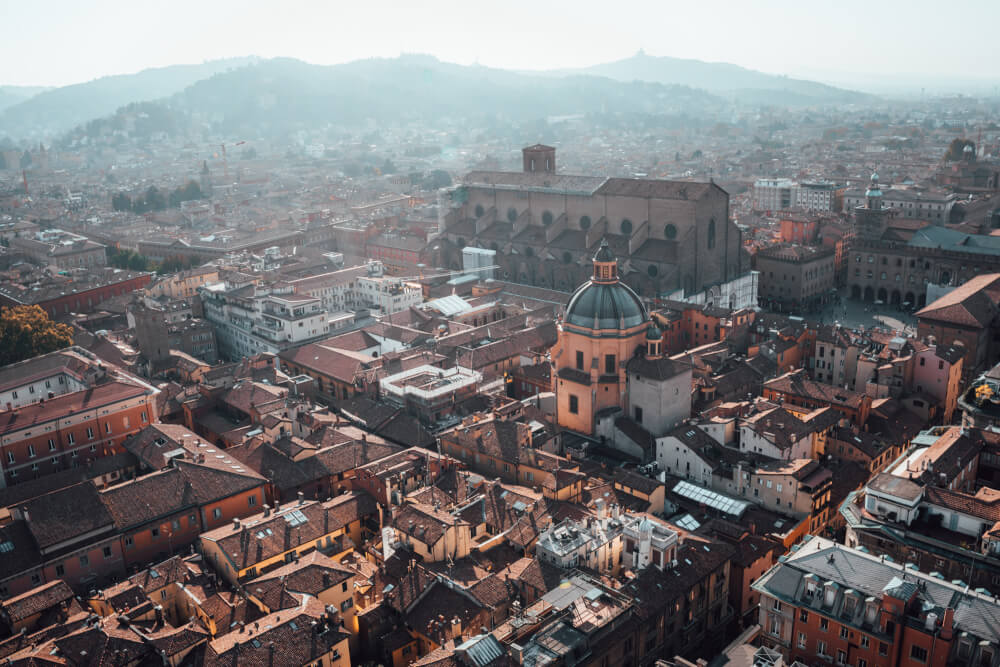
10. Bring a bag you can easily carry
One of the biggest beginner mistakes that visitors make in Italy is they pack way too much and are left red-faced dragging their gargantuan suitcases across centuries-old cobblestones, trying in vain to find their hotel which… probably doesn’t have an elevator.
I get it – the urge to look cute while lapping up gelato is SO strong, but remember there’s ways you can pack light and still not look like a slob.
So, my best Italy packing tip is to simply not bring any bags you can’t physically carry.
Trust me, there are many situations where you might need to pick up your bag (going up stairs, getting on a train, etc.) so if you’re not able to lift your own bag, then you need to downsize pronto.
This tip is especially important in places like Cinque Terre or the Amalfi Coast where there’s a lack of roads and lot of stairs.

11. Cover up when visiting churches
Unbeknownst to many first time visitors, churches in Italy usually have a dress code stating that shoulders and knees must be covered. If you’re not dressed appropriately, often you won’t be let in.
SO, if you’re visiting in the summer, make sure you have a scarf you can drape over yourself and at least one or two long options for bottoms.
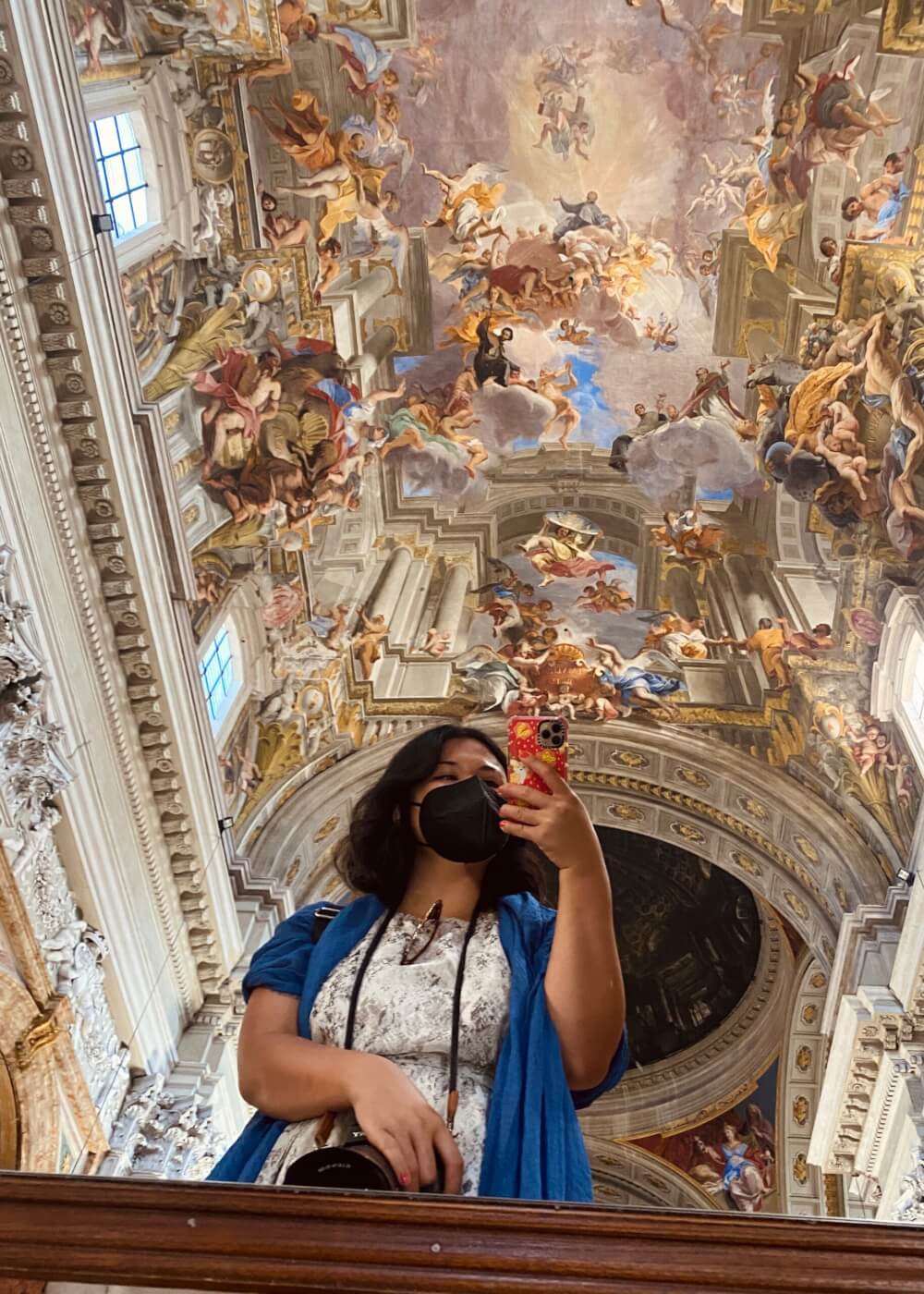
12. Prepare yourself for scaffolding and restorations
Italy is an amazing destination thanks (in part) to its fascinating history.
… The flip side of that history? Many of the country’s most famous monuments have seen better days, and are in constant need of repair/restoration.
So, mentally prepare yourself for the possibility that the amazing church or landmark you’ve seen a million times on social media is covered in scaffolding, or doesn’t look as you hoped due to restorations.
As a harrowing example, this is what the Trevi Fountain looked like on my first trip to Rome.
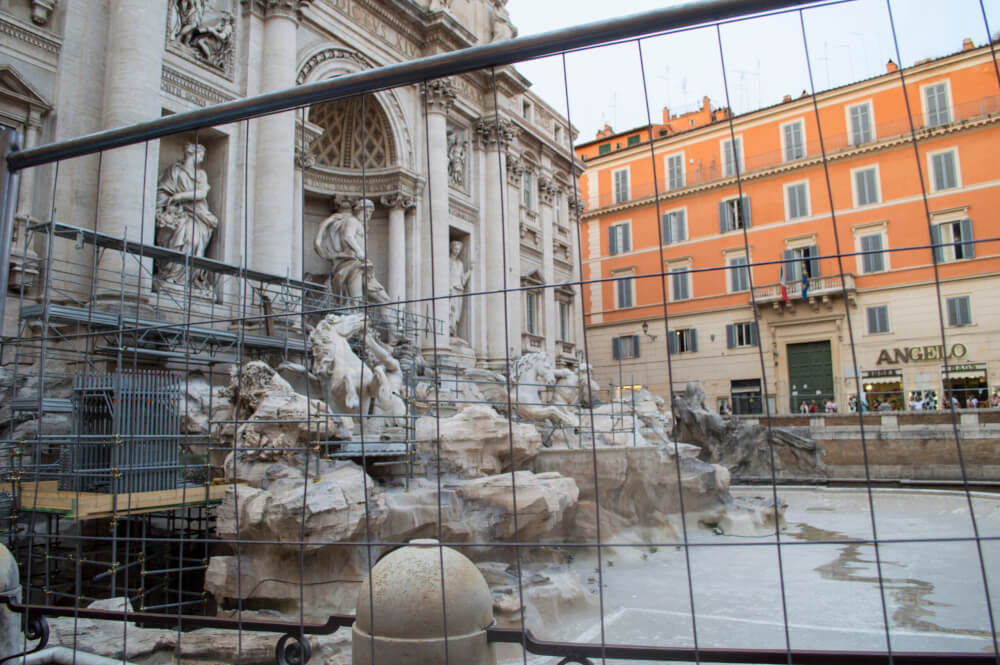
13. Book tickets for popular attractions in advance
Sorry for the aggression but I’m really passionate about this: the absolute worst waste of time during your Italy trip is waiting in line to buy tickets the day-of.
If you are reading this right now, you have access to the Internet. As such, you have access to buying tickets in advance… which you should do because it’s usually cheaper, saves you waiting in line, and also protects you in peak season if things sell out, which they often do.
So, buy those tickets in advance! I usually book directly on the attraction’s official website, or scour sites like GetYourGuide and Tiqets for deals.
NOTE: If there’s a skip the line option, most of the time it’s also worth the extra cost.
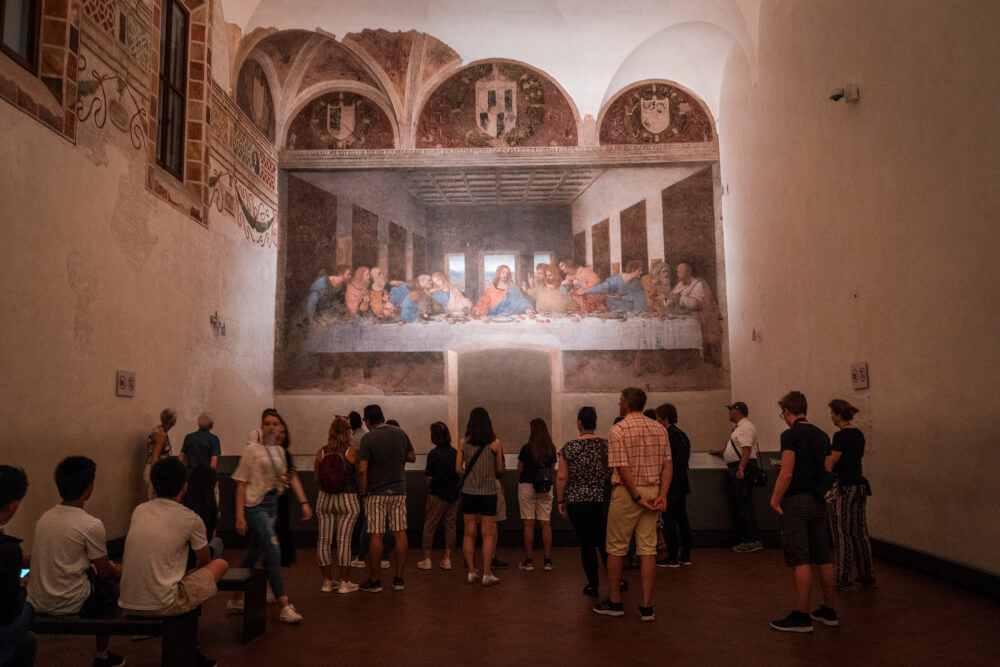
14. Learn the tricks to avoiding crowds at attractions
It’s ironic really – most tourists hate seeing other tourists when they sightsee.
After all, how dare the public be out in public at the same time as me?!
But hey, if this irrational peeve is one you share, I have some great tips for avoiding crowds in Italy. You might not like some of them, but trust me – they work!
Here’s how to avoid crowds at major attractions in Italy (especially during peak season):
- Wake up at sunrise to explore/take photos
- Visit attractions shortly before closing time (this is how I managed to get the Vatican Museum practically to myself!)
- Look into sunrise or after hours tours for attractions
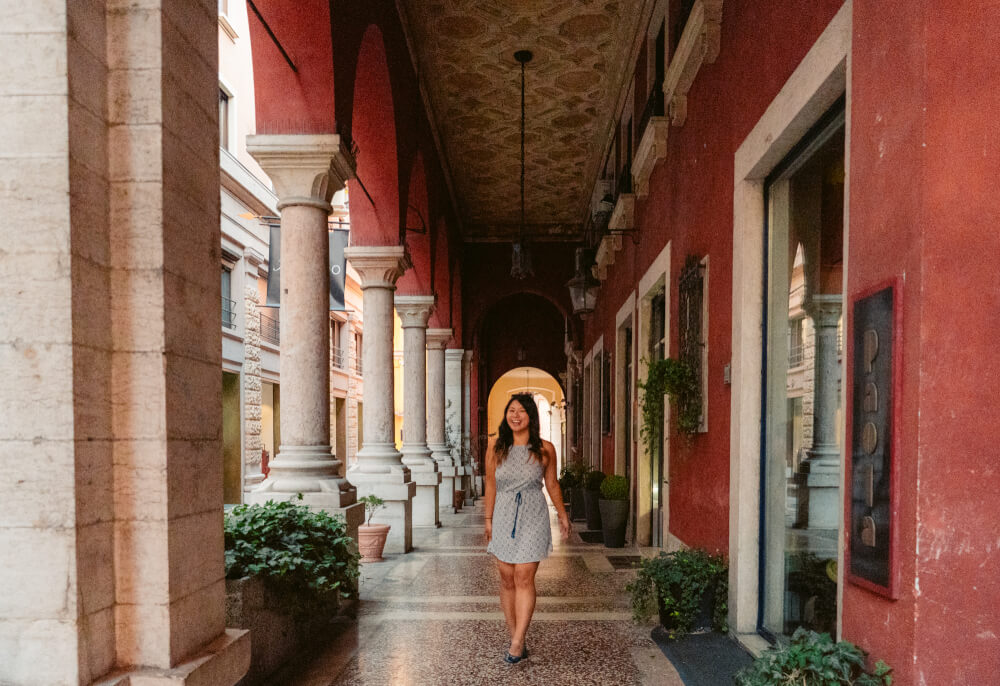
15. Buy a city pass or card
Besides crowds, the other villain in your Italy sightseeing journey is prices.
Yes, visiting attractions in Italy (especially the big ones) can get real spendy real quick.
Luckily, there are many ways to save. One of my favourite tips for saving money on Italian attractions is getting a city card or pass, which gives you entry to most major attractions in a place for one set cost.
For instance, I’ve used this card in the past to check out all the fun things to do in Verona, and found it not only saved me lots of money, it also pushed me to see some more off the beaten path attractions I would’ve otherwise not paid for.
Every city will have some kind of pass for this purpose, so be sure to look into it, crunch the numbers, and see if it’s worth it for you!
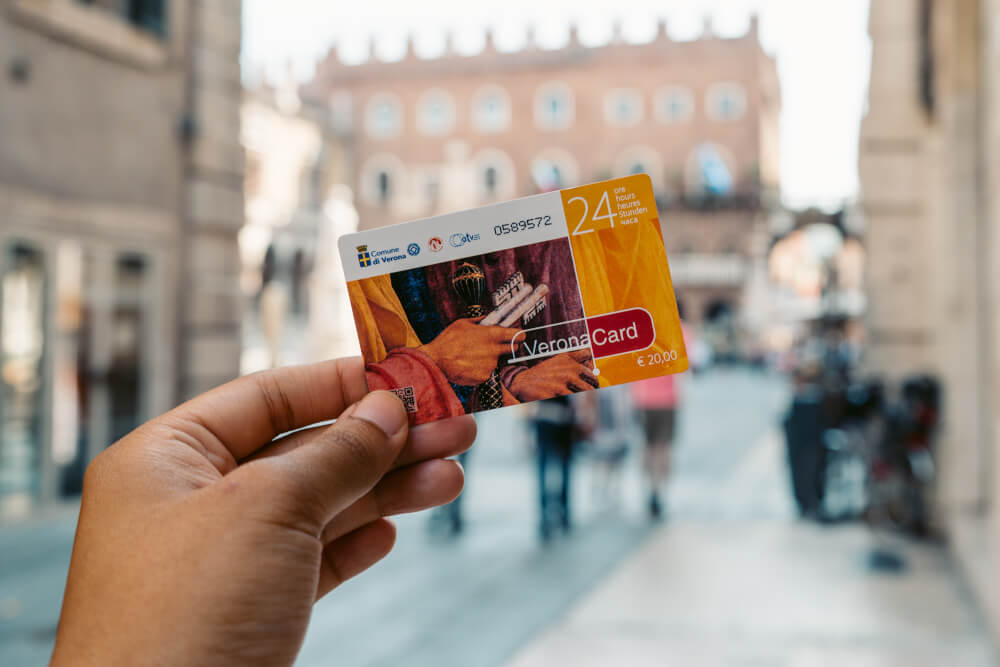
16. Beware of pickpockets
It’s not a fun topic, but no list of travel tips for Italy would be complete without a quick pep talk about dodging pickpockets.
I do have a full guide on how to avoid pickpockets in Europe if you want more specific information, but just know that pickpocketing is a very common occurrence in touristy Italian cities.
I was actually pickpocketed in Rome during my first backpacking trip, so I know this from sad, first-hand experience.
But don’t worry – a little common sense (which I lacked at the time) can go a long way.
Remember, pickpockets thrive on easy, unsuspecting targets, so to make sure that’s not you, here are some quick tips for avoiding pickpockets in Italy:
- Be ultra vigilant in busy areas like train stations or tourist attractions
- Keep as much distance as possible between you and others
- Avoid things being given to you for “free” e.g. friendship bracelets or roses – often they will then demand you pay
- Don’t sign any petitions – often they will hassle you for a donation or use it as a distraction while pickpocketing you

17. Don’t freak out when your accommodation photocopies your passport
There are a lot of random culture shocks that first time visitors experience in Italy – one of the most jarring (and immediate) is that hotels/accommodation will take your passport and make a photocopy of it upon arrival.
But don’t worry, before your mind jumps to an Italian thief stealing your identity, just know that this is a common legal practice they have to abide by, and not a super brazen scam.
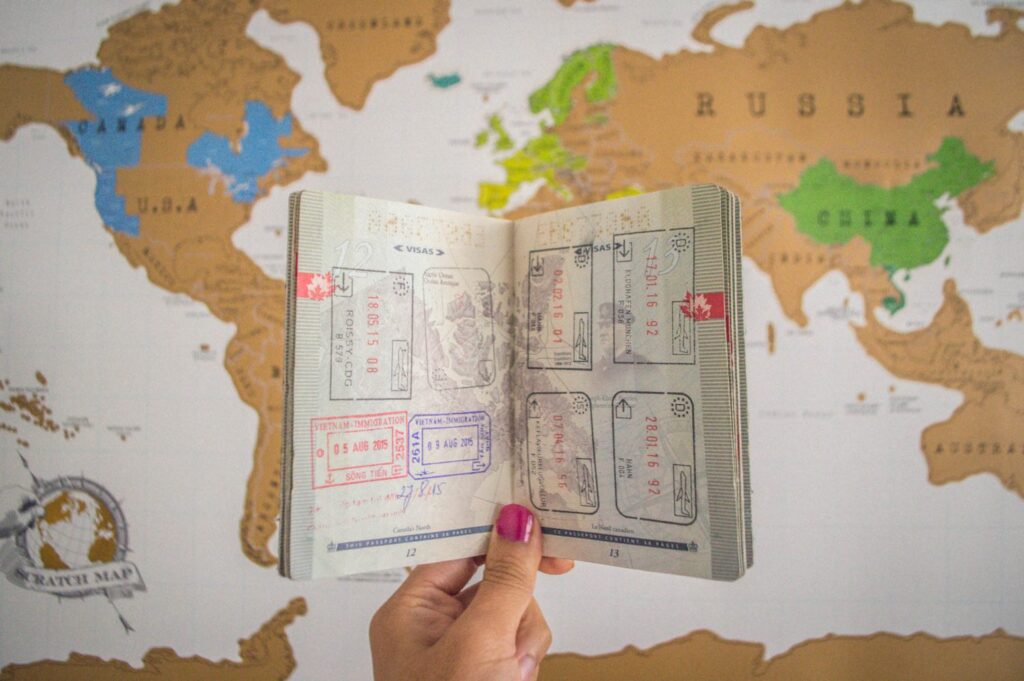
18. Prepare for the tourist tax
Another thing that feels like a scam, but actually isn’t? The almighty Italian tourist tax.
The reason this feels like an illegitimate ploy is because they usually ask for the tax in person, and some old school places will also demand it’s paid in cash.
But don’t worry – just like the passport thing, the Italian tourist tax is also not a scam. It’s simply an additional charge to be paid on arrival, and the amount is typically 3-7 euros per person per night.
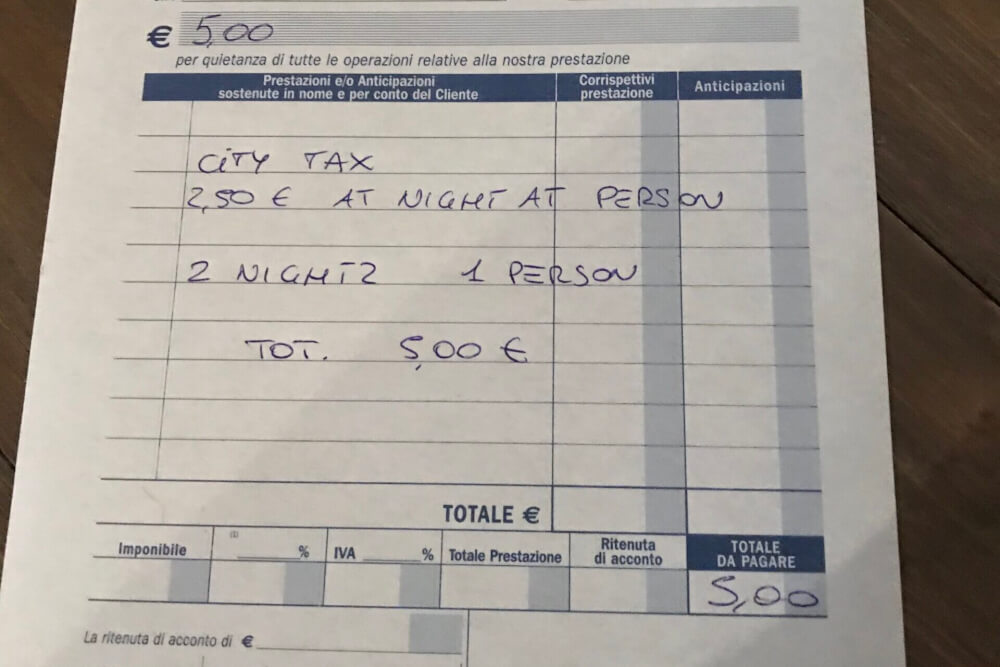
19. Make sure you have cash
While we’re chatting about money, I have to say this as well: when you get to Italy, one of your first orders of business should be to get some cash out. Preferably in smaller denominations (like 10 or 20 euro bills).
While card payments are a lot more popular these days in Italy than say, ten years ago, there are still a lot of old school businesses that prefer cash, especially for smaller purchases (i.e. the many, many gelatos you’ll be inhaling).
Having coins is also ideal for situations like vending machines or paid public bathrooms.

On that note…
20. Prepare to pay for the bathroom
Yes, sadly the ‘pee for free’ mentality is increasingly dwindling in Italy.
While some free public bathrooms do exist here, paid ones are becoming more common and usually cost between 50 cents to a euro. So be sure to have some coins on you in case of a urinary emergency.
Otherwise, make sure you do your business at a museum or restaurant before you leave. Even paid public bathrooms can be tough to find sometimes!
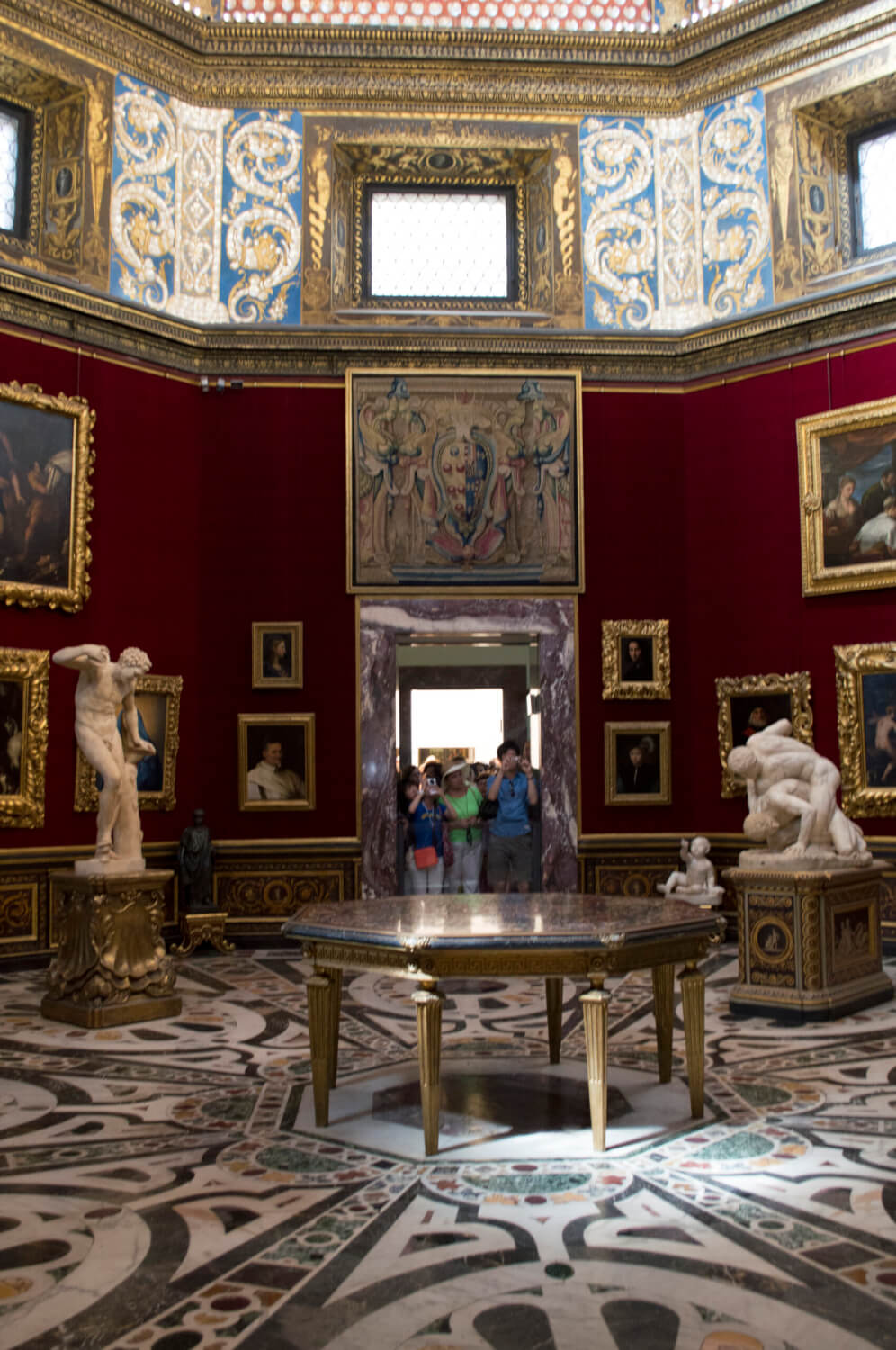
21. Be prepared for random toilet flush locations
Italian toilets can be strange. Perhaps it’s just bad luck on my part, but I’ve been caught out multiple times over multiple trips by bizarre flushing mechanisms that take a while to understand.
So, prepare for inconsistency.
Sometimes you’ll walk into a bathroom to find a standard pull flush, sometimes it’s a separate wall mounted flush OR sometimes it’s a pedal on the ground or a random button on the wall.
Overall, it can really vary, so before you panic, take a good look and see if there’s anything nearby that is pressable – odds are that’s the flush.

22. Dine far away from tourist locations
This is one of my top Europe travel tips for any destination, but especially in Italy, I’ve found that the closer restaurants are to tourist hotspots, the pricier and more mediocre the food.
Of course, there’s exceptions (I’ve written previously about where to eat near tourist attractions in Rome), but avoiding restaurants on main squares or overlooking major landmarks is usually a good idea.
The logic makes sense of course – restaurants in these areas are usually targeting tourists who will never come back, so customer retention is clearly not as much a priority as other restaurants that may cater to a more local demographic.
Often, all it takes is a short walk a few blocks away to find food that is much cheaper, and much tastier too.

23. Learn how to spot tourist trap restaurants
Of course, tourist trap restaurants can exist outside of main squares/hotspots too… so how can you quickly and efficiently weed these out?
Well, there are usually a few tell tale signs in Italy that a restaurant is (probably) going to be a tourist trap, or at the very least, a place that caters more to a tourist demographic.
Here are a few to look out for:
- Menus and signs only in English, rather than Italian (or a BUNCH of menus out front in various languages)
- Large photos of the food outside/on the menu
- A persistent host standing outside trying to get you to sit down
- Big signs advertising appealing tourist perks like Free WiFi
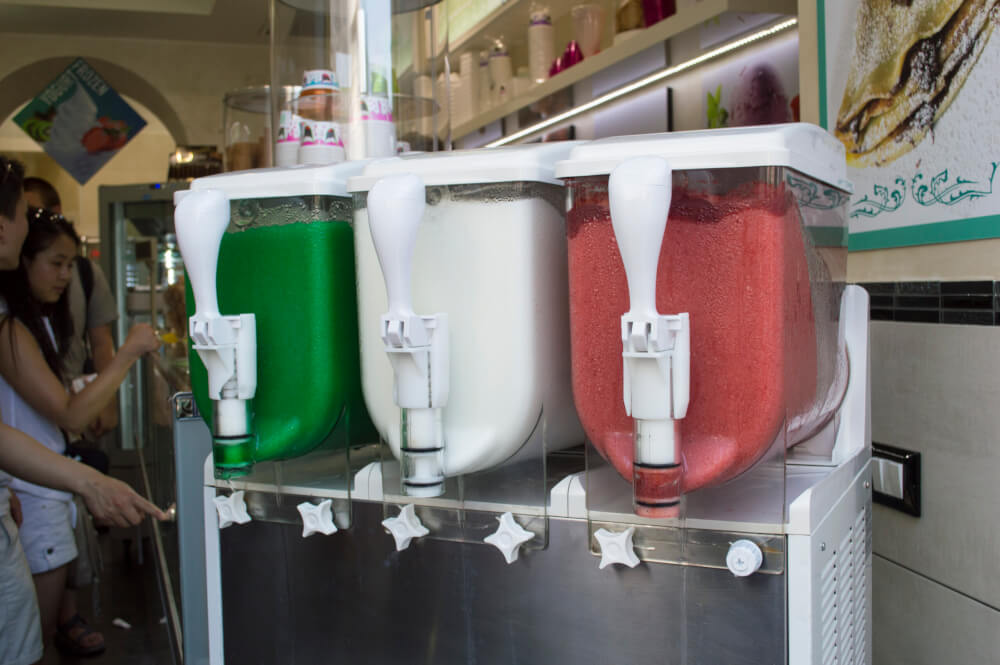
24. Order based on the regional specialties of where you are
When in Italy, the urge to simply order pizza and pasta until you explode is… admittedly, tough to resist.
But the truth is, what we in North America know as Italian food is just a very surface level understanding of Italy’s cuisine.
In reality, Italy is a country with exceptional regional diversity, and most regions and even cities have their own specialty dishes that they excel at.
So, before you simply plonk down and order a pizza everywhere you go, consider what that region specializes in and give that a try. I promise your tastebuds will thank you.
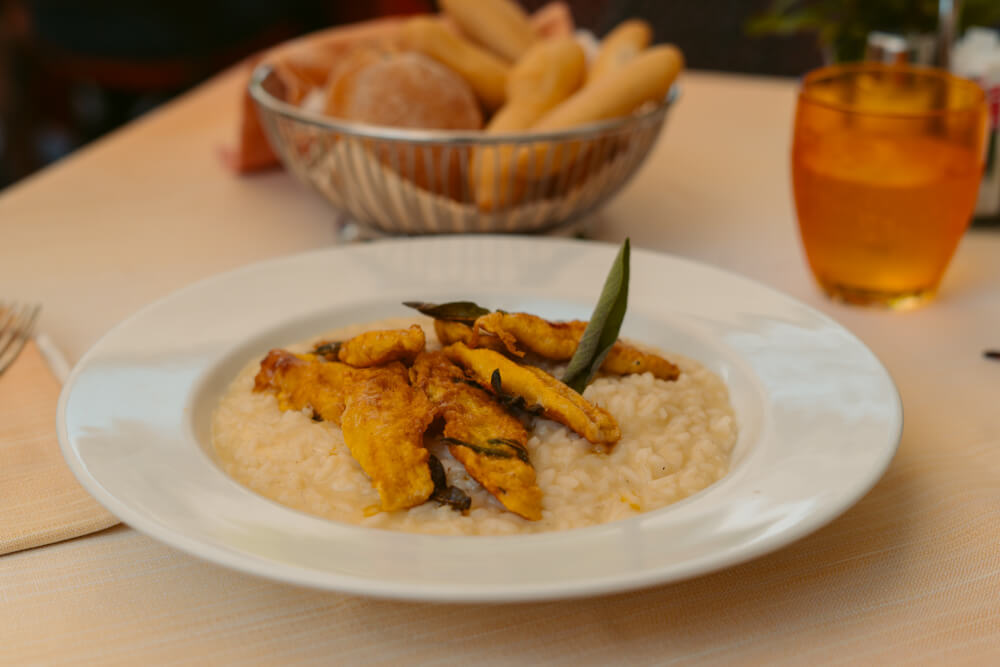
25. Don’t order or look for Americanized Italian classics
I feel like I’m about to break a lot of hearts with this Italy travel tip, but here goes: I’m very sorry to say that many of your favourite “Italian” dishes may not be offered in Italy at all.
Spaghetti and meatballs? Chicken fettucine alfredo? Garlic bread?!
Sadly, none of the above are actually Italian dishes served in Italy, but rather Americanized iterations of Italian classics that (while delicious) are not typically found in traditional Italian restaurants.
Luckily, there’s no shortage of delicious Italian dishes to try, and many of your favourites are probably based on some kind of Italian staple, so do a little research before you head out.
… and if you DO see any of these American-Italian classics on a menu, then take it as a sign that the restaurant caters more to tourists than to locals.
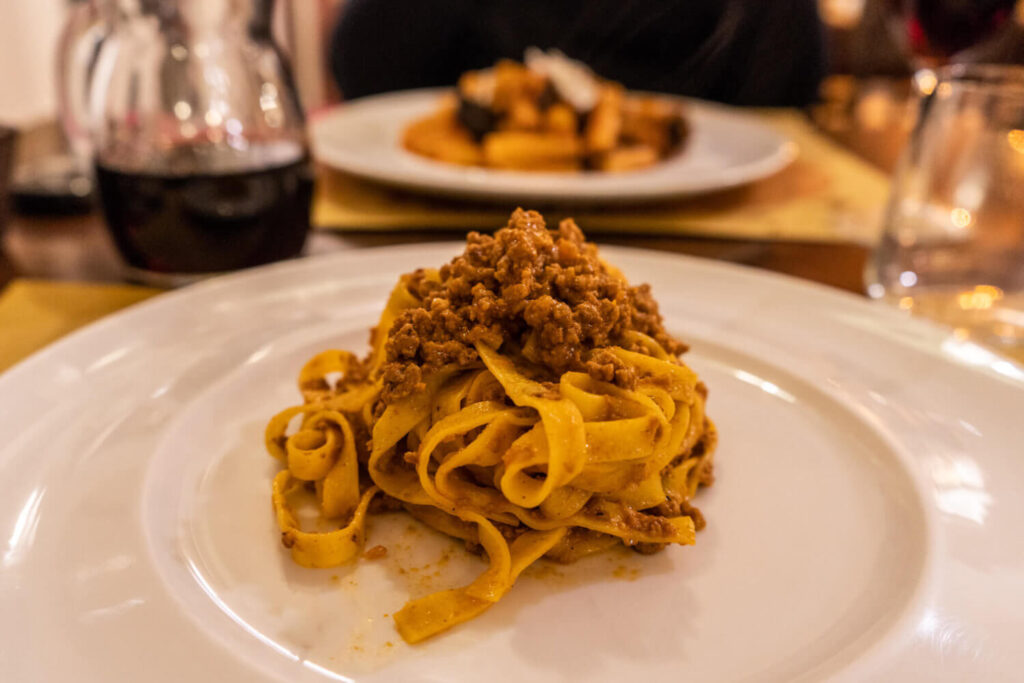
26. Know that the word “menu” in Italy has a second meaning
If you’re used to the word “menu” solely referring to the list of dishes you can order at a restaurant, then you should know the word also has a second meaning in Italy.
Often times, an Italian “menu” refers to a set meal that includes multiple courses, so if you see something like “Menu – 25 euros” that means they are offering a set deal that is 25 euros for multiple courses, not that every dish costs that much.
Ordering a “menu” in this way can often be a more cost-efficient way to enjoy a multi-course meal, so if you’re looking to splurge on a budget, that’s definitely something to consider.
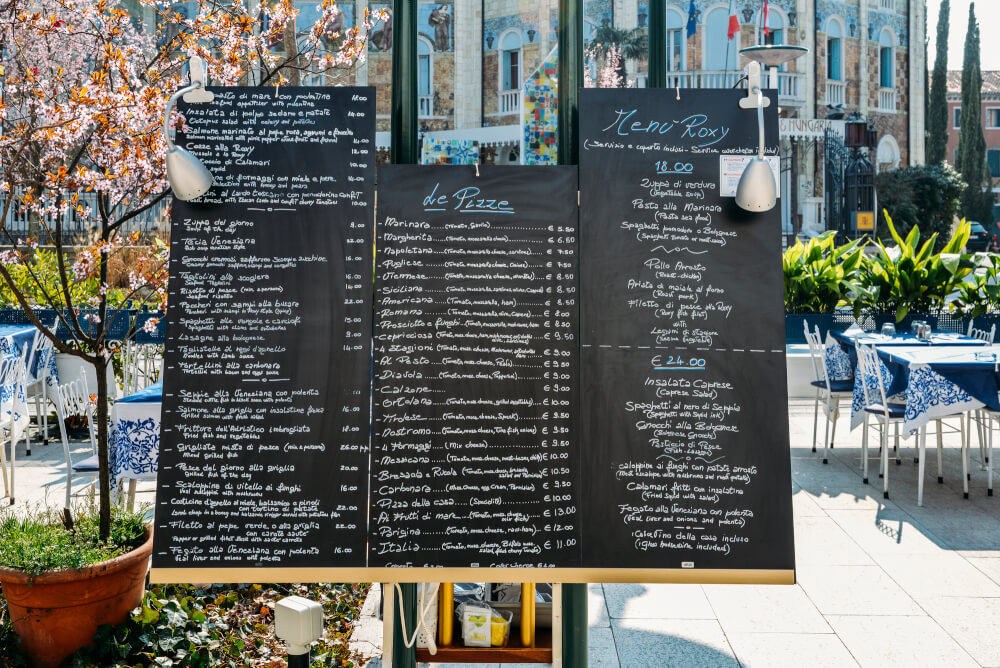
27. Understand the basic structure of an Italian menu
Alright – now the fun stuff! Ordering at a restaurant!
Once you get the hang of them, Italian menus are fairly easy to understand, but can be confusing for first timers so here’s a quick crash course.
The standard structure of an Italian menu goes according to courses, which are normally shown in the sequence they would come during the meal, namely…
- Antipasto: Appetizers like cured meats, cheeses, etc.
- Primi: Usually a carby dish like pasta or risotto
- Secondi: Usually a meat-based dish
- Contorni: Side dishes like roasted vegetables
- Dolci: Desserts
But hey, before you force yourself to pick four courses every time – know that practically speaking, it IS completely normal to just have a Primi (a plate of pasta is plenty filling on its own) or a Secondi with a Contorni rather than follow through with something in every course/category.
But hey, if you want to pursue a four course feast in the name of cultural appreciation, that’s an endeavour I’m happy to endorse as well.
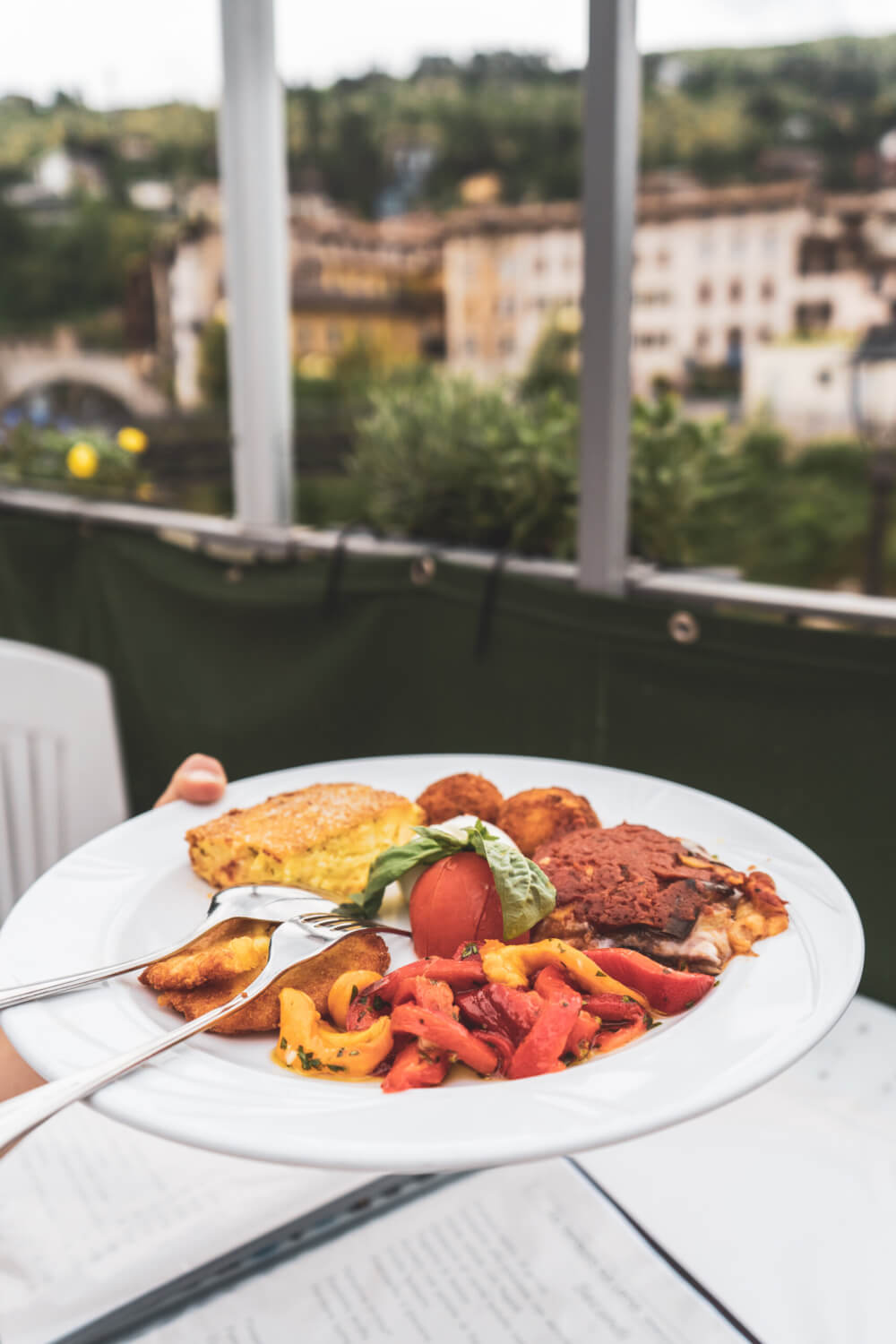
28. Beware that many restaurants close between lunch and dinner
Unlike North America where restaurants often stay open all day, it’s common for restaurants in Italy have a mid-day break (Riposo) between lunch and dinner, typically between 1-4pm.
During my first trip to Italy, my friends and I referred to this harrowing period as “the food desert” during which all our attempts to secure food were thwarted by a parade of “CHIUSO” (closed) signs.
If you (or your travel companions) suffer from Hangry Hangry Hippo Syndrome, this is an important thing to take note of.
Of course, in larger cities, there will often still be options available, but (from experience) the more traditional restaurants will usually be shut during this in-between period.
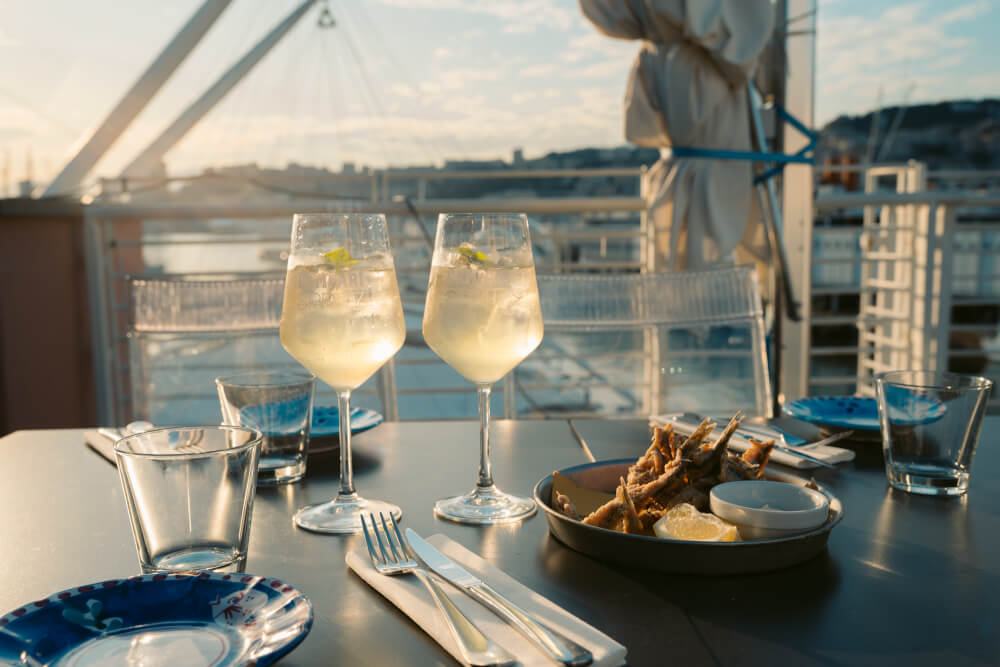
29. Make reservations
For popular restaurants, this is a must. Many restaurants in Italy are small and have a limited number of tables, and unlike in North America, many don’t set aside a section for walk-ins.
So, if there’s a particular restaurant you had your heart set on, booking in advance is key. If you feel nervous to do it yourself over the phone, you can always ask someone at your hotel to help you out, or (in the case of bigger cities) try to find places that take an online booking.
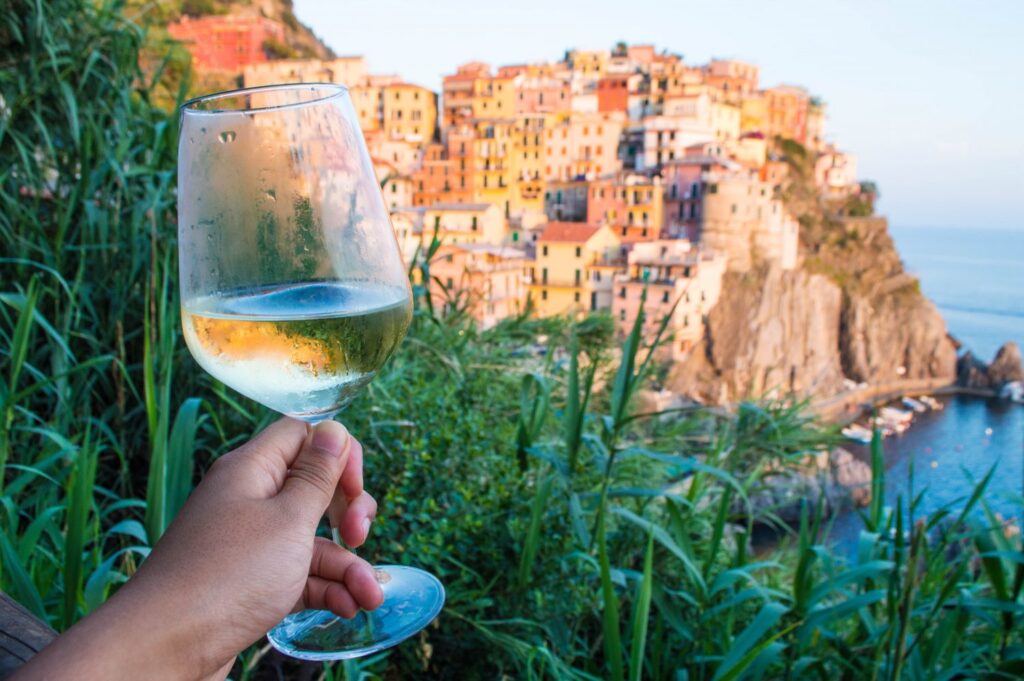
30. Expect slower service
The pace of meals (and accordingly, of service) can be a lot slower In Italy than what you’re used to.
Remember, in Italy, meals are meant to be savoured and enjoyed over a few hours, and the assumption is you want your own privacy, so they’ll rarely come in to check on you after they’ve taken your orders/brought your food.
So, if you need anything like another drink, or additional food, make sure to take the initiative and get your server’s attention – they’ll probably ignore you otherwise.
In fact, it’s even considered rude to bring the bill without asking in Italy, so if you’re hoping to pay and leave, make sure you ask for the bill, rather than expect it to come.
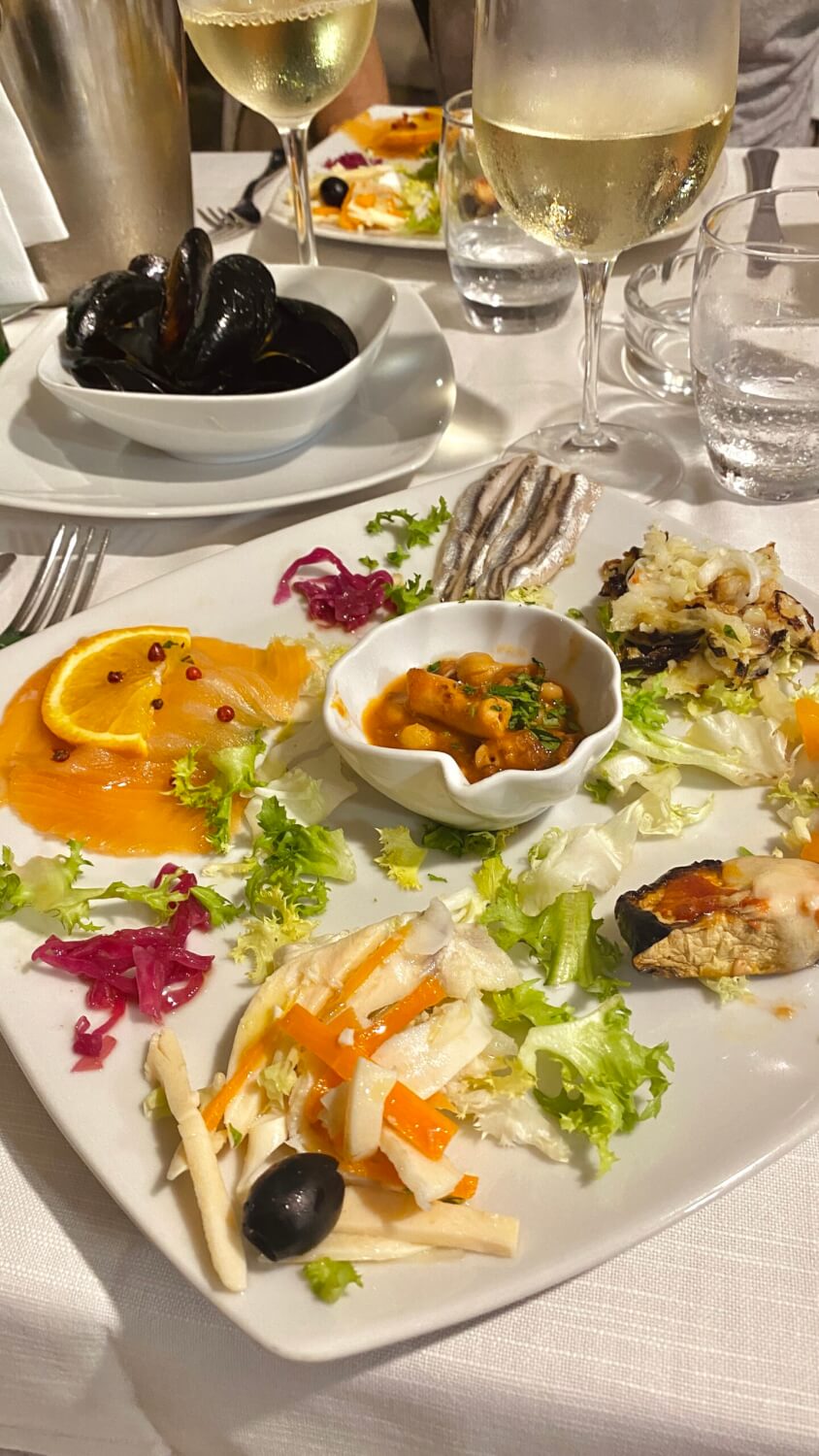
31. Take advantage of the free water fountains everywhere
Another great tip for saving money in Italy? Don’t waste money on bottled water.
Across the country, you’ll find free drinking fountains supplying delicious water for all, so bring a refillable bottle to take advantage.
… Or do as I did on a particularly hot day in Rome, and simply drink cupfuls with your hands like you’re cosplaying an ancient farmer after a hard day out on the fields (trust me – it’s more refreshing this way).

32. Be prepared to pay for water in restaurants
Funnily enough however, while free water is available in abundance from fountains on the street in Italy, water isn’t usually free in restaurants. This is because bottled water is the default, and most places won’t offer tap water as an option.
So, when the waiter asks you if you’d like water, know that you’ll likely be charged a small fee per bottle (usually 2-3 euros for a big one.
And be sure to specify whether your want still or sparkling! I tend to go for sparkling – it makes every meal feel like a mini-celebration.
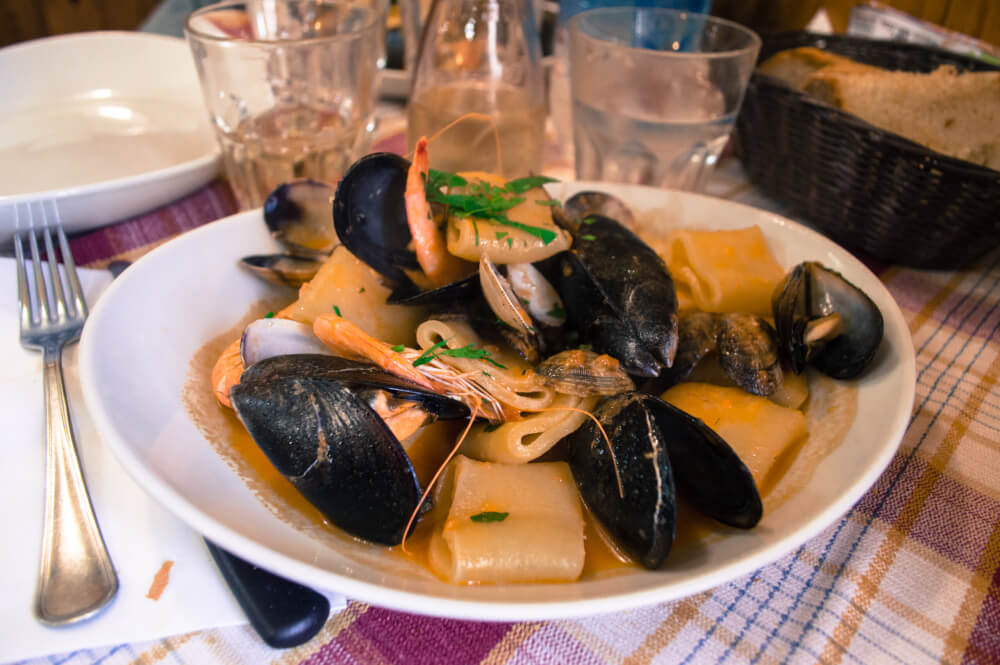
33. Be prepared for the “coperto” charge
Besides water, another charge to be mindful of is the ubiquitous Coperto.
Most restaurants in Italy will charge an additional fee per person (around 2-3 euros) as a “Coperto” charge.
You can think of this a service/sit-down fee, usually including bread too.
This is not a scam – it’s fairly standard, and evens out as tipping culture in Italy is very modest compared to North America, with rounding up or 5-10% being the max.
Take note that this also means oftentimes sitting down to enjoy your coffee, treat, etc. will cost more than taking it away (because a coperto charge does not apply unless you occupy a table). This is why you’ll see most locals consuming their coffee at the bar counter, rather than at a table.
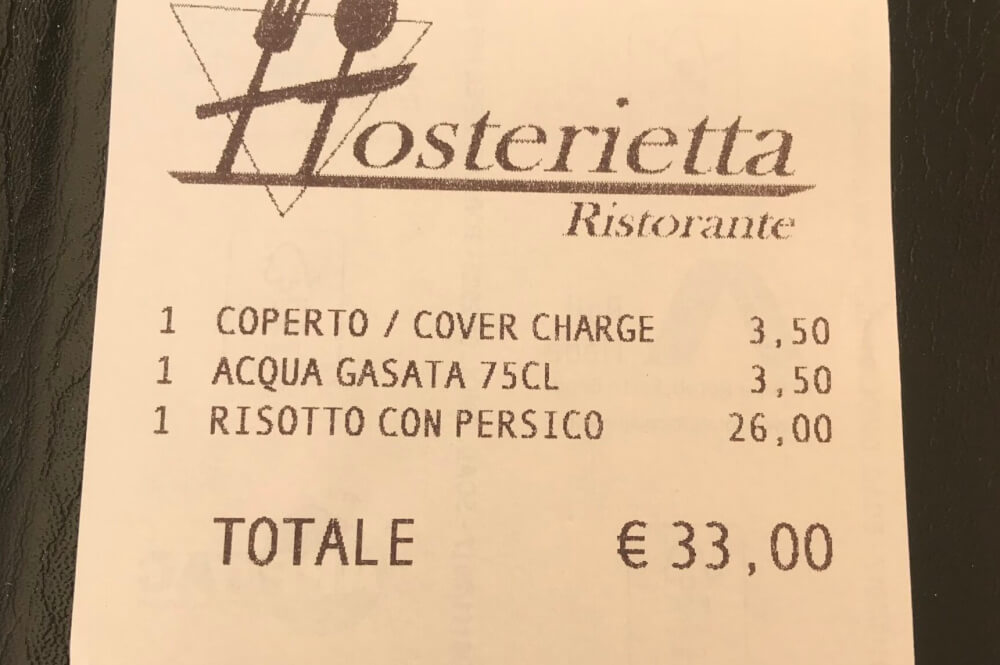
34. Expect breakfast to be small and sweet
… Just like me 🙂
Kidding.
Anyways, if you’re a hot, savoury breakfast person like I am, then you may face a wave of disappointment when you get to Italy.
Unlike their lavish lunches and dinners, Italians treat breakfast as a relatively modest affair. A standard Italian breakfast may be a coffee or cappuccino with a pastry, plus a juice. Not a single egg in sight!
Of course, if this is a dealbreaker for you, many hotels doing continental breakfasts will offer more familiar options – as will some more contemporary cafes in bigger cities.
But if you want to start your day like an Italian, a cappuccino and cornetto is the way to go.

35. Make sure to enjoy Aperitivo
From denim jeans to espresso machines, Italy is responsible for a lot of the world’s most wonderful inventions… but perhaps none is more enjoyable than the almighty Aperitivo.
An Aperitivo is a classic pre-dinner ritual observed across Italy. It refers to a pre-meal drink intended to whet your appetite for dinner.
How to aperitivo depends on where you are. Some places will bring you a free snack or two while you enjoy your drink, while some others will offer a full-on buffet for you to graze at while you enjoy your cocktails.
No matter how you do it, it’s one of the best ways to unwind after a long day of sightseeing, so be sure to partake… if even just in the name of cultural education 😉

36. Familiarize yourself with Italian coffee culture
Speaking of cultural education, it’s time we tackle some Italy coffee tips.
Italians take their coffee seriously, with proper caffeination being a pleasure firmly weaved into the fabric of Italian culture and society.
And while you may think you know coffee from, you know, chugging it by the gallon every morning, there’s a lot of things about Italian coffee culture that commonly catch visitors off guard.
So, here’s a quick list of must-knows for drinking coffee in Italy:
- If going out for coffee, you would be going to a “Bar”, not a “café”
- Coffee is most commonly consumed on-site, usually standing at the counter of the bar. Getting coffee to go isn’t common
- The standard order (Caffè) refers to an espresso shot, not a drip or filter coffee. This kind of coffee isn’t typically offered at traditional coffee bars – instead ask for a Caffè Americano.
- Cappuccinos are typically a breakfast drink – ordering one after 11am is considered a faux pas, especially after a meal
- In contrast, a Caffè (espresso) is very common after a meal to help with digestion
- Lattes do not exist – ordering one may get you a glass of milk as that’s what “Latte” means in Italian. Instead, for a coffee with milk, order an Espresso Macchiato
- Lastly, “Iced coffee” isn’t a common order at traditional coffee bars. Common alternatives include Crema al Caffè, an amazing coffee slushie, or Affogato al Caffè which is gelato topped with espresso
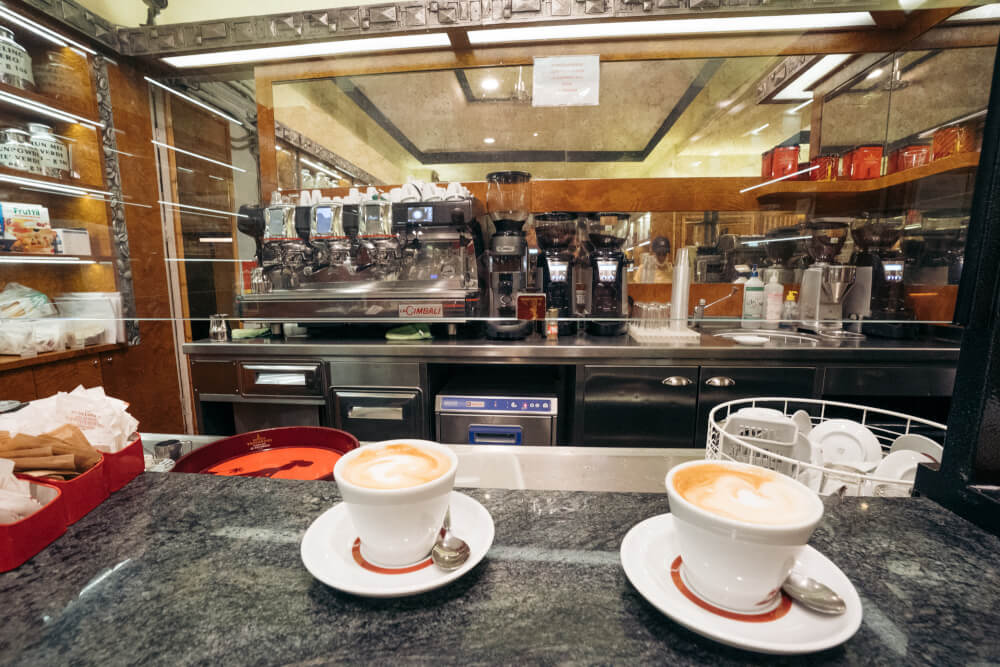
37. Don’t order pepperoni pizza
Niche Italy food tip, but an important one. If pepperoni is your topping of choice back home, just know that in Italy, “peperoni” literally means “bell peppers”.
Which is how you end up getting something like this:

For a North American style pepperoni pizza, instead, the closest thing to look for is pizza with salami.
38. When in doubt, get the house wine
Choosing a wine in Italy may seem like a daunting endeavour, with plenty of tantalizing options and a wild range of prices.
But hey, if you’re a total cheapskate like me and also lack a refined wine palette – the choice is easy! Go for the house wine.
Unlike in North America (where ‘house wine’ is just whatever near-rancid bottles they have left), house wine in Italy is almost always delicious and best of all, budget-friendly.
Plus it’s usually served in a jug which feels wonderfully Middle Ages.
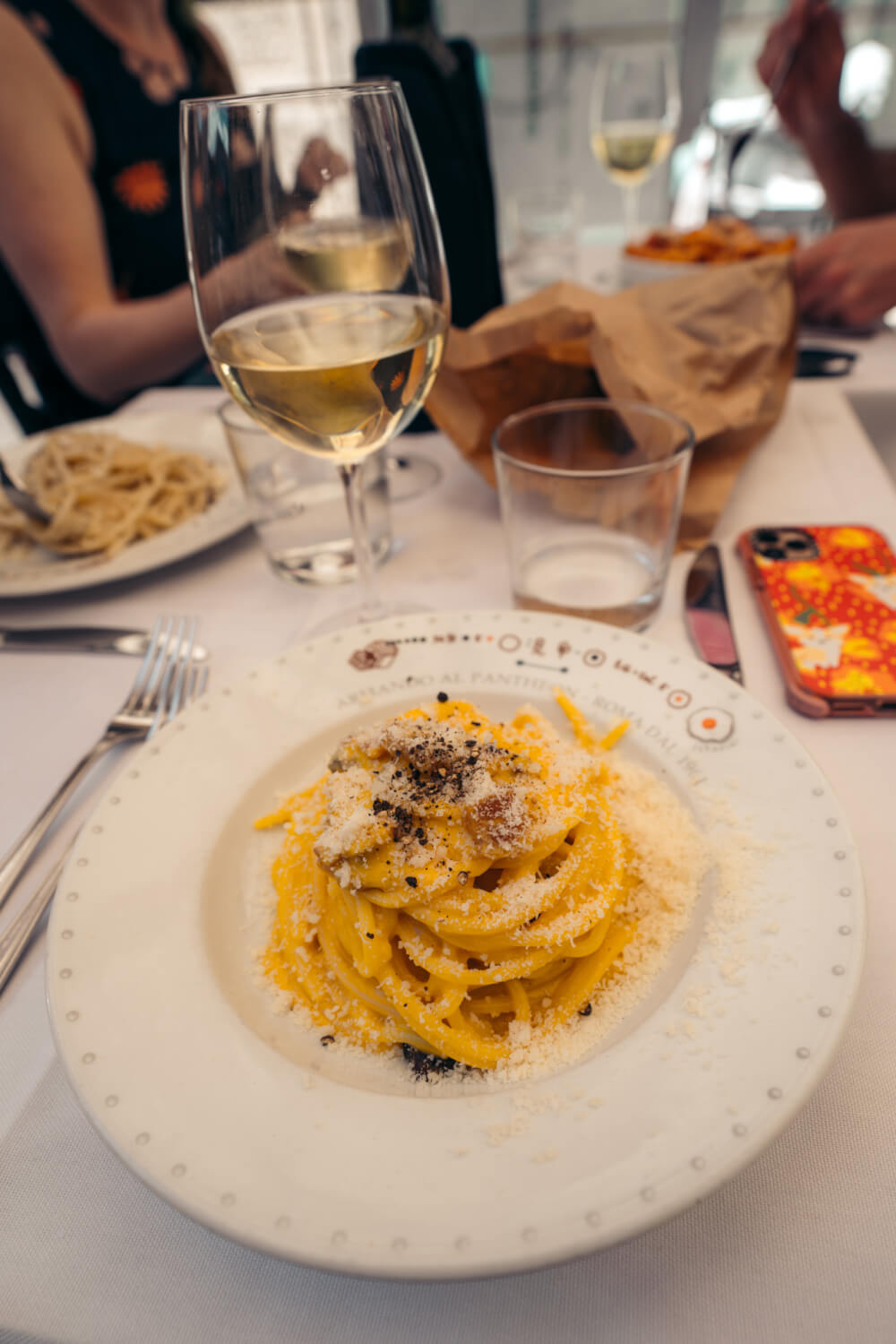
39. Avoid the pretty, colourful gelato
Lastly, I need you to be strong, because this final Italian travel tip is tough to obey.
… But please, as difficult as it is, do NOT give into the hypnotism of the beautiful and vibrant gelato mounds that beckon you from touristy gelato shops.
I’m talking places like this:
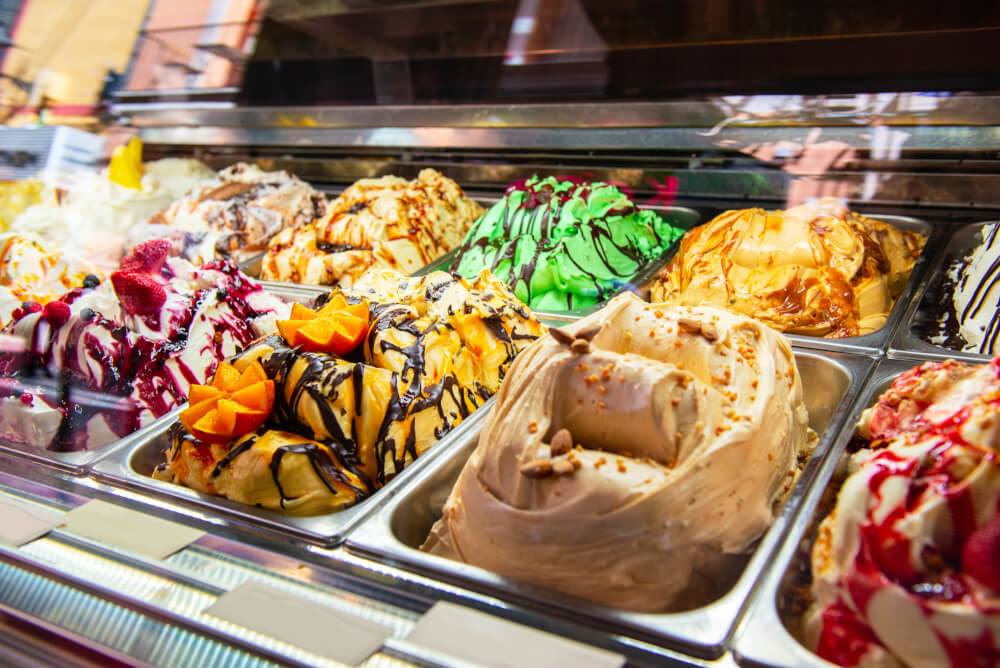
Usually, these places with the vibrant gelato mountains topped with decorations are beautiful to look at, but not the best gelato to eat.
That’s because their eye-catching nature usually indicates a lot of artificial colouring and (if there’s huge stacks of it), likely a lack of freshness as well.
In contrast, what you’re looking for are covered metal containers with flat lids. This indicates the gelato is being kept at the right temperature (and on a less technical note, that they take this stuff seriously).

The colours should also be paler and more natural, like so:
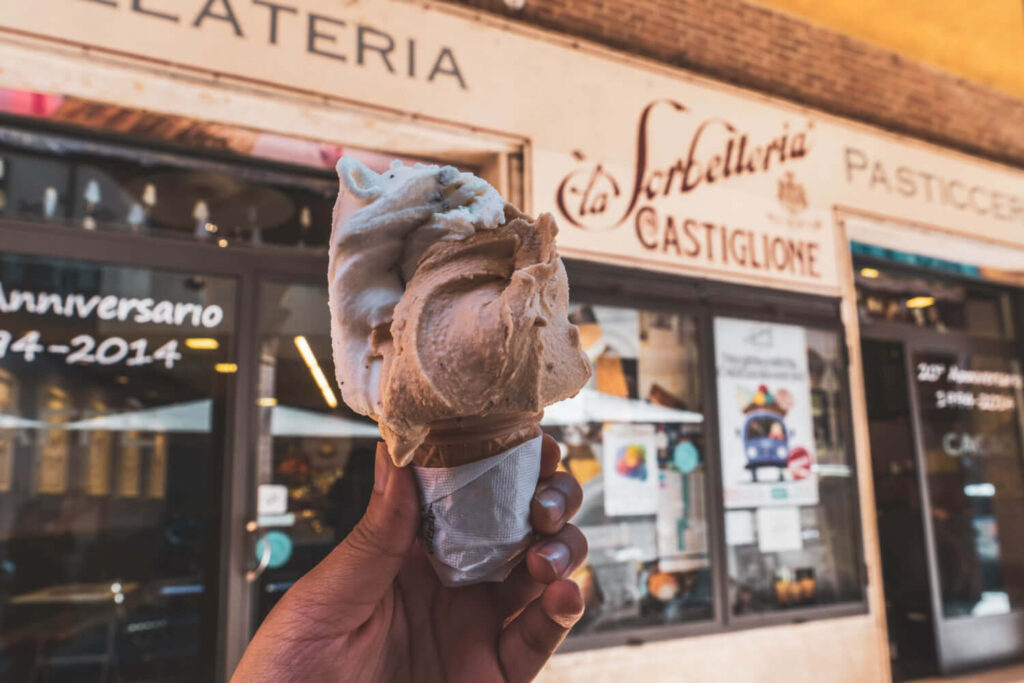
I hope this list of Italy travel tips was helpful!
Admittedly, this was a VERY long list of tips for Italy, so if you’re here, I’m beyond proud of you! Hopefully by now, you’ll feel much more prepared for your big Italian vacation, but if you have any more questions, let me know in the comments.

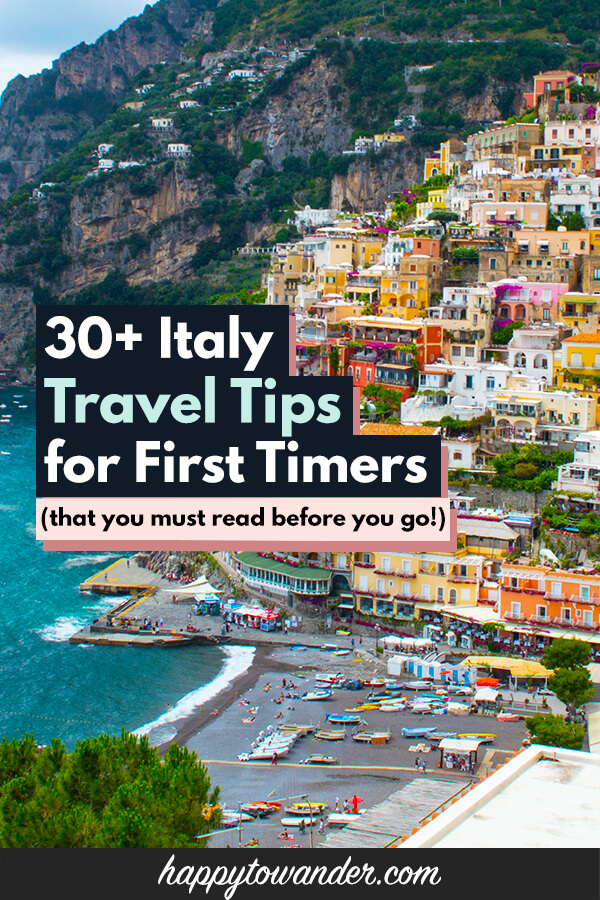
My goodness! This is amazing! Thank you so much!